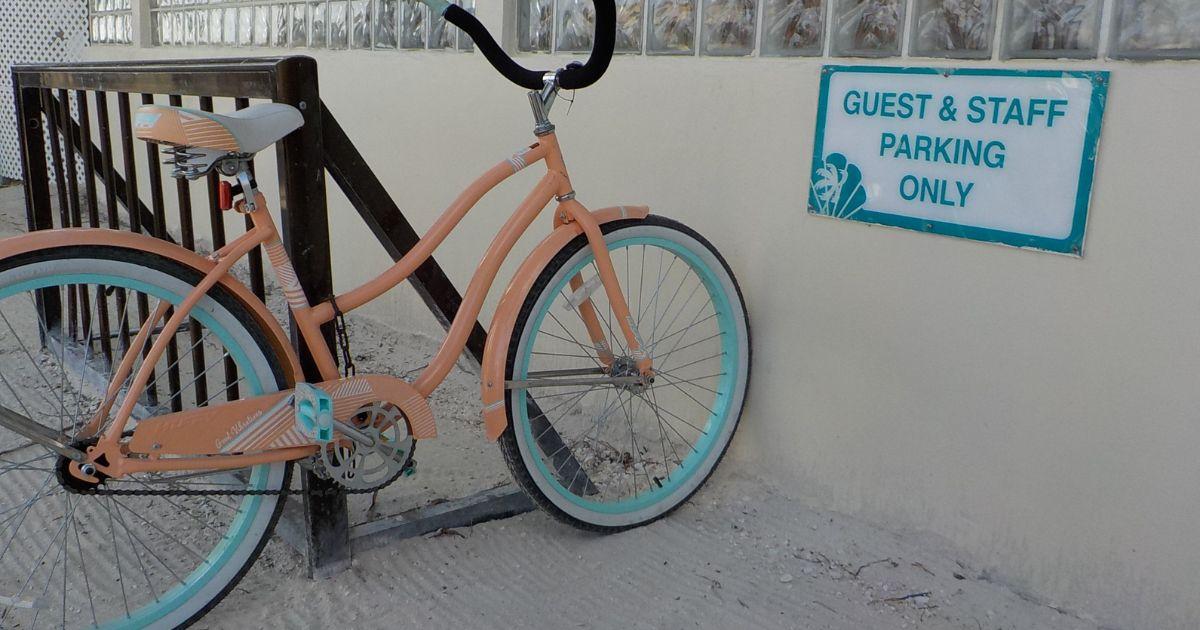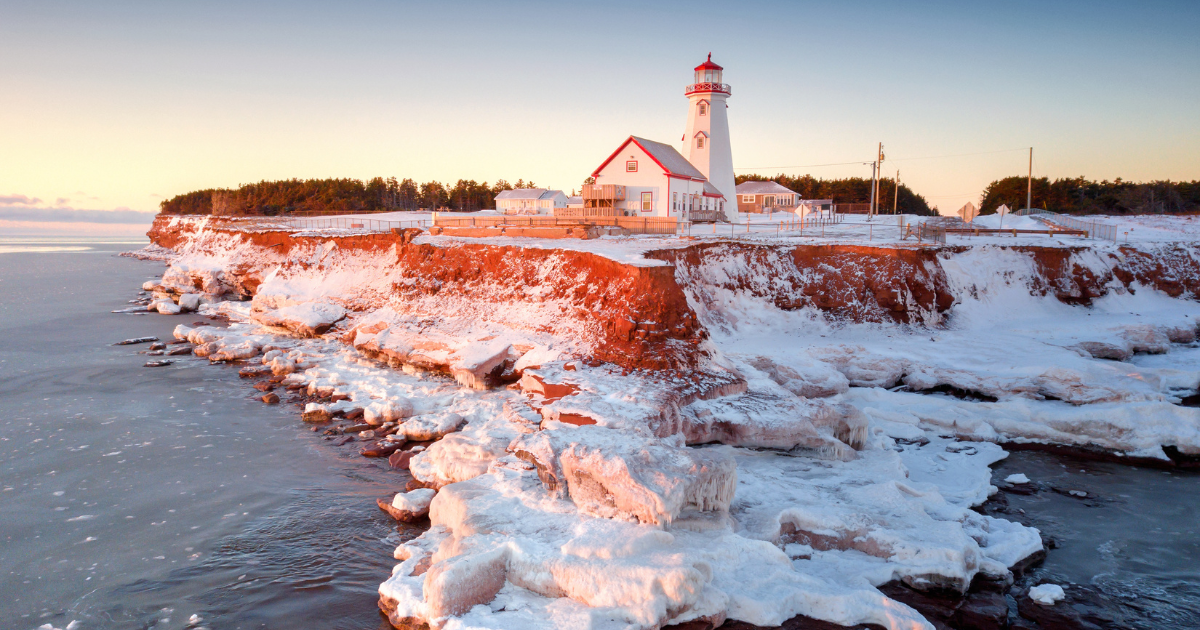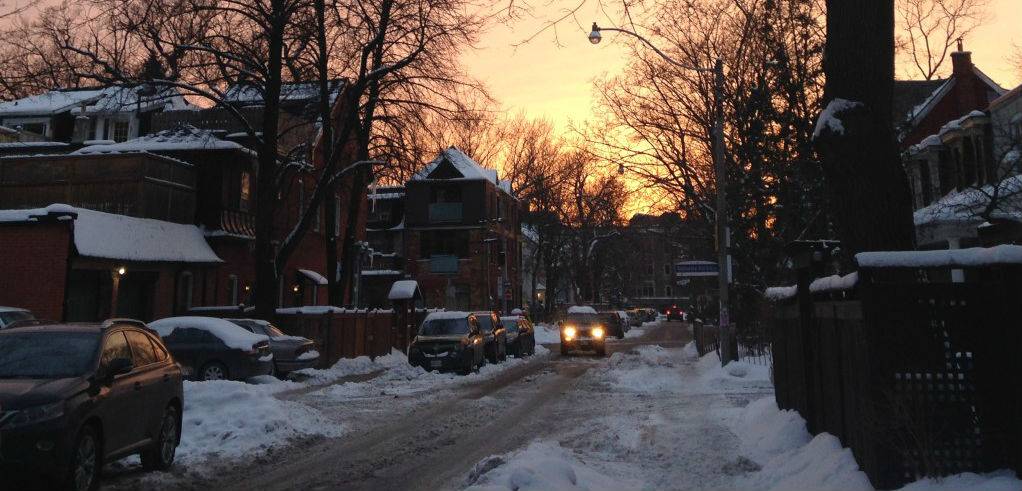It was a miracle of transfers: airport shuttles, planes, ferries, taxis and a golf cart. The water taxi from Belize City to Ambergris Caye, San Pedro, Belize, was perhaps the most hair raising, as the boat resembled a large canoe rather than a catamaran. We were hip to hip with giddy, travel-weary strangers, all our suitcases and backpacks piled unrealistically high. With safety paramount for the 45-minute ride northeast, to the largest island of Belize, we were issued questionable life-jackets that appeared to have been stowed since 1942.

We visited in late winter. We had just missed avocado and mango season, but we were arriving during the bounty of the cantaloupe, watermelon and plum harvest, and the spring lobster season was closing February 15, so our timing was impeccable.
The natural smelling salts of the sea revived our winter-dulled senses. Spirited birdsong, boats burning oil, and the waft of charcoal grills set the mood as neon-pink rummy “welcome drinks” were placed in our hands when we arrived at Mata Rocks Beachfront Hotel on Ambergris Caye.
It’s easy to relax into the hum of Belize. Everyone slows down a notch in the blanket of heat. Although the neighbouring Caye Caulker is a completely car-free island, there are a few vehicles on San Pedro. The roads, however, are dominated by golf carts, beach cruisers and flip-flop traffic. With a population of 30,000, San Pedro has over 15,000 golf carts to keep tourists and locals alike moving to and fro. While the mammoth carbon footprint of air travel is undeniable, Kim and I felt responsible with our choice to visit the Central
American island that has ambitiously adopted impressive sustainable tourism measures.

Exhibit A: Seaweed for Pothole Repairs
Morning coffee tastes remarkably better when it offers uninterrupted indigo views of the Caribbean Sea. Sandpipers perform daily agility runs along the shore, across the beds of sargasso (a.k.a. sargassum). The surge in sargasso (a macroalgae) wash-ups along the Caribbean and Gulf coasts have been witnessed in the Florida Keys, Texas, Trinidad and Tobago, and as far as Sierra Leone, Africa.
In the middle of the Atlantic, the Sargasso Sea has been dubbed the “golden rainforest of the ocean” for its diversity. This “floating buffet” supports turtles, seahorses, swordfish and humpbacks. Sargasso “debris” along Belizean shores is not a new development; in fact, locals have been using sargasso for years as garden fertilizer and to fill potholes and prevent beach erosion. In Belize, even coconut husks are repurposed for DIY
pothole repairs.
Despite the natural phenomenon of this “seagrass” and its critical necessity to the underwater life it supports, tourists prefer a manicured beach that is void of the seaweed, which means sinewy crews are chronically removing the sargasso on a daily basis. It’s being used in fields as fill, and there has been early success using it as crop fertilizer, since it quickly decomposes into dry, wiry remains.
Repurposing sargasso is just one of several creative ventures witnessed on Ambergris Caye. At South Beach, the roofs of retired golf carts have been repurposed as shade for lounge chairs.

The 1-Mile Diet
Eating local has never been easier. A short walk creates our short list for the week: goat curry, conch fingers, grilled chicken, lobster po’ boys, stuffed snapper, organic coffee, pineapple quesadillas, coconut mojitos, and
fancy, spicy mango margaritas rimmed with chili pepper flakes. At Wild Mango’s, blackened snapper is served on a bun swizzled with a bright cumin and lime dressing. After a diet of bologna and wilted cabbage on a previous trip to Samana, Dominican Republic, we are thrilled by the edible offerings.
Of course, all the usual North American staples can be found on the island, from Pop-Tarts to Dom Pérignon. You can also find snails in a can, bags of salsa, “crab-and-shrimp boil-ina-bag,” roadside hot tamales, empanadas, fry jacks (deep fried dough pieces), pupusas (flatbread) stuffed with pumpkin, and fresh soursop juice. Vendors run the beaches, selling bags of salty banana chips, golden cashews and just-baked banana bread. Near Mata Rocks, we frequented a veggie stand selling pico de gallo (salsa fresca), finger bananas, pattypan squash and warm corn tortillas.
The Island City Supermarket sells everything else: chicken feet-flavoured potato chips, Chinese candies, “skinless” wieners (who knew there was such a thing?), ruby-coloured sorrel stout and juju berry tea.
Happy Hour
Belikin Beer is brewed by Belizeans for Belizeans. The Belize Brewing Company was established in 1969 by an
ambitious father-and-son team. They acquired an antiquated and long-decommissioned four vessel copper brewhouse with German roots that traces back to 1927.
In fact, all but one piece of equipment was second-hand. The independent company remains family owned and is run by Michael H.M. Bowen, an eighth generation Belizean. Glugging a glacial Belikin at El Divino (for research purposes), I pointed out the posted sign behind the bar to Kim. “This is the last straw!” Belize has
stopped issuing straws with drinks and will only supply plastic cutlery if necessary. Belize was on board long before Canadian Starbucks devotees struggled with the idea of a straw-less Frappuccino.
In March 2018, the Belizean government began its phase-out program. Recycling stations, reusable bags, refillable bottles, biodegradable soaps and reusable food containers are being integrated by tourism companies who are enthusiastic about the planet-friendly change. On January 15, 2020, the phase-out plan to ban single use plastic became officially legislated, making happy hour even happier for the environmentally conscious. The legislation prohibits the import, manufacturing, sale or possession of single-use straws, plastic bags, Styrofoam, clamshell containers and cutlery. Cheers to that!

Chicken-Drop Bingo Goes to the Dogs
Chicken-drop bingo? No chickens are dropped or harmed in this event. At Wahoo’s Lounge (owned by a Winnipegger), locals and tourists alike gather for the weekly event, buying bingo squares in hot anticipation of where the chicken might leave its mark. Unclaimed cash prizes are donated to San Pedro’s Saga Humane Society.
Saga smartly partnered with The Coffee Bar (which has since moved to the mainland), and volunteer dog walkers received stamped cards entitling them to half-price coffees and free cookies as a sweet thank-you.
The humane society operates the only non-profit veterinary clinic on Ambergris Caye. Before travelling to the island, be sure to connect with Saga to see if they are in need of any supplies. They are always happy to welcome volunteer dog walkers, groomers and photographers (for shelter animals ready for adoption), as
well as those offering data entry or poster distribution services.

Breaking Barriers
The Belize Barrier Reef system is the largest in the Western Hemisphere. It was placed on the UNESCO World Heritage Centre’s list of sites in danger, but the designation was removed in 2018. Recently, offshore oil exploration was banned. San Pedro is located less than half a mile from the reef, and the famed Shark Ray Alley at Hol Chan Marine Reserve is a popular diving destination.
Local fishermen used to gut their catches in the “alley,” attracting harmless nurse sharks and rays. The wild population is still attracted to the area, just like the curious divers and snorkelers from around the world.

The Flip Side of Flip-Flop Life
Despite the government ban on plastics, there’s still so much litter along San Pedro’s beaches. Much of it is the kind of stuff that falls off dive and tour boats: water bottles, flip-flops, beer cozies. I kept a list of the most curious items we found. I do the same for our own Lake Huron shoreline when Kim and I send in our weekly volunteer reports to the Lake Huron Centre for Coastal Conservation. In a single day, we found fishing line spools, toothbrushes, Ping-Pong balls and a child’s bucket seat for a car.
It’s a bewildering and defeating amount of garbage that embeds itself in the sargasso. It makes us want to return to San Pedro and pick up garbage every day for a year — and take a few Saga dogs for company! I wonder aloud if the same incentives that Saga and The Coffee Bar used could be applied for inspiration: coffee and cookie perks for picking up litter. It would be a hard sell for a lot of tourists who expect a manicured beach without any participation, but it would be a monumental move to keep Belize’s beaches the
treasure that they are.

The Changing Tide
Sailboats tack back and forth in the gin-tinted waters. Chatty green parrots cluster and take to the sky in an emerald flush. The doves coo their familiar booboo-boo from the power lines. The birds serve as our feathered sundial, and when the parrots pass by late in the afternoon, we know that it’s 5:55 p.m. Our hotel
has a rack of cruisers and BMX bikes for us to use, and we do.
More often, Kim and I set out on foot to explore the dusty roads that split off the main artery. We send gushing postcards home — for an unbelievable 30 Belizean cents ($1 CAD = $1.61 Belizean dollars) — about the starfish plants (Orbea variegata) at Mata Rocks. The succulents look exactly like landlocked starfish.
We stop at the Wahoo Lounge to hydrate as charcoal clouds curl in with threatening thunder. Reuben, the affable bartender, gives us the insider island scoop over long pours of rum. The proposed (to open in late 2021) Margaritaville Beach Resort threatens to squash the smaller, independent hotels. There are too many establishments in the area and not enough tourists to support every bar, juicer, paleta shop and golf cart rental; the rustic beach bars are being replaced by the Margaritaville conglomerates in the north. A new, sterile “townlet” development looks like a miniature “anywhere America.”
Kim and I walked through it and noted the sanitized prefab canalside homes and townlet strip of huts offering chicken and waffles, doughnuts, and a martini lounge. San Pedro is progressive and trending. Kim and I chose Ambergris over a return visit to Caye Caulker because we were fearful that the car-less island
that we loved so much back in 2012 would be forever changed by discovery and “progress.”
My sister had been to Ambergris prior to our trip to Caye Caulker, and when we traded trip notes, it’s obvious
that both islands have seen dramatic changes, both positive and negative. On San Pedro, we cruised past the Truck Stop, Belize’s first shipping-container “food park.” Closer to Mata Rocks, we found a smaller enterprise, South Station Bar + Grill, made from three shipping containers, plus wooden cable rollers repurposed as tables.
With a Belikin chaser, we tried skewers of chicken gizzards from the grill. “Chicken bubble gum,” Kim offered as tasting notes. Still, we appreciated the no-waste approach to cooking that is so evident on the island and in the shipping-container architecture movement.

Experiential Tourism With a Twist
Belize is a diverse mix of thrifty backpackers and leather skinned retirees. Popeye-armed windsurfers, charged-up divers and “twitchers” (birders) mingle at the Sandy Toes happy hour, drinking Fanta-and-rum specials in a bar of makeshift decor. Dollar bills from around the world catch the breeze, and donated T-shirts hang from the rafters. There’s even a steering wheel from a golf cart that serves as decor. The soundtrack bumps from the Bee Gees to Michael Jackson.
Tourism has encouraged visionaries like the owners of the Belize Chocolate Company, who promise a bean-to-bar experience. The shop is stuffed with the sweet toothed, seeking truffles laced with lime, coconut and ginger. They sell “chocolate tea,” though neither Kim nor I are game. Chocolate soap? Who said the bar had to be edible?
Juice Dive is Belize’s first cold-pressed juicery, offering cleanses and vegan fare. At Iguana Juan’s, there are tequila tasting tutorials or mimosa-and-yoga classes. Colourful bags of root veg chips are sold for a song (unlike the organic price points in Canada). For those less concerned about such things, you can have buckets of beer zip-lined over the water to your inner tube at Palapa Bar & Grill. AJ’s Sports Bar serves “dirty” fries loaded with mac ’n’ cheese, so all palates and styles of travel are covered.
Here, food production is always visible: bean to bar; fish hook to grill. We watch a chef deftly fillet a snapper and grill it with “a lick of jerk or garlic.” At Regina’s Paletas (think: Popsicles), sandwiched between a barbershop and a car mechanic, we find coconut-and-ginger ice treats that blow our mind. We buy cornmeal johnnycakes and coconut bread from a band of kids trucking Tupperware containers of baked goods up and down the beach. Belize revolves around food, and we’ve never eaten so well.

Flybys & Pop-Ups
I learn that there’s a bird guide in the Mata Rocks hotel office and make quick work with the moisture-heavy copy of Birds of Belize by H. Lee Jones, identifying and documenting all the birds we’ve seen: social flycatchers, cinnamon hummingbirds, great kiskadee, gray kingbird, olive throated parakeets, elegant roseate spoonbills, great-tailed grackles, harpy eagles, yellow throated warblers, and northern jacanas with their unforgettable oversized feet. I also create a wish list: northern potoo, crested owl and chestnut-coloured woodpecker. Wow! Kim reminds me that my paleta is dripping and I refocus.
In a birding intermission, Kim and I happen upon a pop-up market across from the Banyan Suites. Local artisans and mahogany-skinned expats usher us in. Kids are selling squares of pizza for a school fundraiser. There are pastel watercolours of boats and pelicans, Ball jars of soursop moonshine, bags of crystallized ginger, cilantro pesto (amazing), quick dill pickles, and a table selling pull-up Huggies diapers and Christmas decorations.
A French woman explains her vegan status and tells us about her brother in France who ignores this, sending her several cans of foie gras each Christmas. She has a table stacked with jars of stuffed duck hearts, duck necks and duck “scratchings” (like crumbled confit) for the taking. We bought her homemade savoury sun-dried-tomato-andjalapeno spread instead. Kim swapped notes with a local making charcuterie boards from ziricote wood, who used beeswax to polish her boards to a mirror shine. The wood is marbled and as black as ebony, with a toast-coloured tap line.
Kim thanked her for her trade secrets for her own charcuterie board production at home. If only we could travel back home with some ziricote!

What to Expect & Not Expect
Ambergris Caye is vibrant and eons away from the infrastructure and chain hotels of other equatorial islands like neon Aruba. Pockets of wealth contain themselves in the townlet, Mahogany Bay, and Wyndham and Costa Blu resorts in the north. In between, the lively local sparkle is pulsing strong. You can still buy a shot of rum from a plastic jug on the beach, coleslaw served from an old ice cream pail, and moonshine in a Ball jar.
There are no jet skis tearing back and forth, though they can be found at “Secret Beach” (which is no longer a secret) on the “other side.” Along with motorized surfboards, cornhole tourneys and “tailgate chairs” to put in the water, there’s a cloud of not-so-secret pot too. “Don’t be shy, just get high,” whisper the vendors, palming pre-rolled joints and edibles. Indeed, they keep everything local!
As our time diminished in San Pedro, Kim and I worked our way through Regina’s entire paleta menu. Coco-cinnamon, pina colada, watermelon, picosita (cucumber, lime, salt and chili pepper) and chamoy (a Mexican
hot-sauce-flavoured option). On our last night, we met two Mennonite expats with Albertan roots in South Station. They introduced us to their raw milk (which they had sold to the bar owner) and decadent coconut
cream. Their sect sells the cream and milk in addition to limes and pineapples — all with horse and buggy. In Belize! Over strains of Anne Murray on the buzzy speakers, we toasted Canada, Anne and raw milk, followed
by an enamel-removing shot of moonshine. Now, there’s a juxtaposition.
The fiery jerk chicken, bobbing sargasso and brilliant parrots remain vibrant in my mind. For a pedestrian-friendly destination that offers unique volunteer opportunities, a genuine 1-mile diet menu and environmentally sound initiatives, visit the islands of Belize. Leave your plastic bags at home, walk a dog, don’t forget your reef-friendly SPF, and pick up some garbage on your beach walk. I’ll send you money for a
coffee and a cookie.
Jules Torti’s work has been published in The Vancouver Sun, The Globe & Mail, travelife, Canadian Running and Coast Mountain Culture. With experiences as a canoe outtripper, outdoor educator, colouring book illustrator and freelancer, she is thrilled to be able to curate, write and read about the very best things in life.













